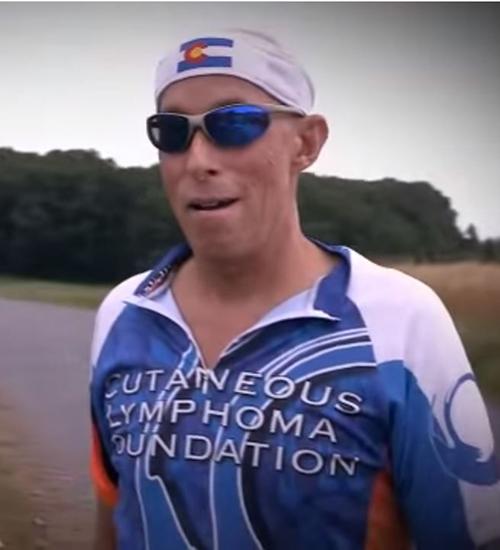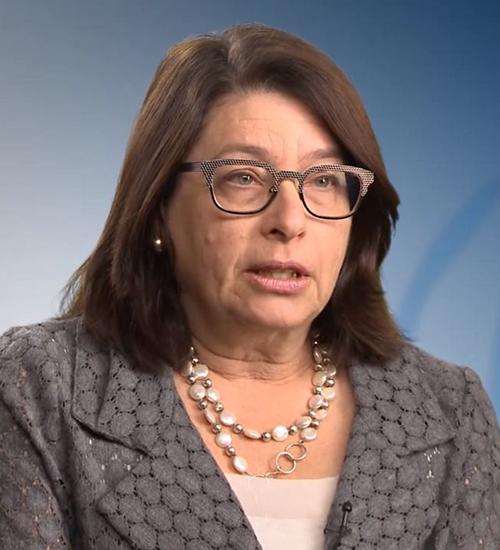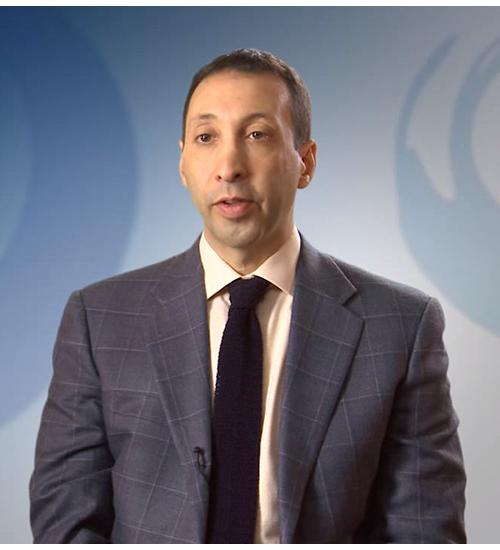Sézary syndrome is a type of cutaneous T-cell lymphoma (CTCL). Other types of CTCL include mycosis fungoides (the most common type of CTCL), primary cutaneous anaplastic large cell lymphoma, lymphomatoid papulosis, and subcutaneous panniculitis-like T-cell lymphoma, to name a few. Most CTCLs typically fall into the category of indolent (i.e. chronic) lymphomas – treatable, but not curable and usually not life-threatening.
Sézary syndrome is a leukemic form of CTCL, and distinguished from mycosis fungoides by the presence of cancerous lymphocytes in the blood.
Most patients with Sézary syndrome have extensive red, itchy rash covering at least 80 percent of the body. In some cases, thicker, red patches (or plaques) and tumors may also appear. In addition, these symptoms may be accompanied by changes in the nails, hair, eyelids, and the presence of enlarged lymph nodes.
There are about 3,000 new cases of CTCL each year in the U.S. and approximately 15 percent of those are diagnosed as Sézary syndrome. Although Sézary syndrome can affect people of any age, Sézary syndrome is most common in adults ages 50 and over, and is slightly more common in men than women. There are no known risk factors for Sézary syndrome.
EXPERT PRESENTERS
Lauren Pinter-Brown, MD, FACP, Hematologist/Oncologist, UCLA Medical Center
Steven Horwitz, MD, Medical Oncologist, Memorial-Sloan Kettering Cancer Center
Many of the same procedures used to diagnose and stage other types of cutaneous T-cell lymphomas are used in Sézary syndrome, including:
- A physical exam and history;
- Blood tests to identify antigens, or markers, on the surface of the cells in the blood;
- A skin and/or lymph node biopsy (removal of a small piece of tissue) for examination under the microscope by a pathologist (a doctor who studies tissues and cells to identify diseases);
- A series of imaging tests such as CT (computerized axial tomography), MRI (magnetic resonance imaging) and/or PET (positron emission tomography) scans to determine if the cancer has spread to lymph nodes or other organs
In addition to these diagnostic tests, occasionally a bone marrow biopsy may be necessary to verify complete staging.
Because Sézary syndrome is such a rare cancer, it is important to confirm the diagnosis by a dermatopathologist or a hematopathologist, a pathologist who is an expert in diagnosing lymphomas.
Sézary syndrome and mycosis fungoides are staged using the same system:
Stage IA
Less than ten percent of the skin is covered in red patches and/or plaques.
Stage IB
Ten percent or more of the skin surface is covered in patches and/or plaques (but not diffusely red).
Stage IIA
Any amount of the skin surface is covered with patches and/or plaques (but not diffusely red); lymph nodes are enlarged, but the cancer has not spread to them.
Stage IIB
One or more tumors are found on the skin; lymph nodes may be enlarged, but the cancer has not spread to them.
Stage III
Nearly all of the skin is reddened and may have patches, plaques or tumors; lymph nodes may be enlarged, but the cancer has not spread to them.
Stage IVA
Most of the skin area is reddened and there is involvement of the blood with malignant cells or any amount of the skin surface is covered with patches, plagues or tumors; cancer has spread to the lymph nodes and the lymph nodes may be enlarged.
Stage IVB
Most of the skin is reddened or any amount of the skin surface is covered with patches, plaques or tumors; cancer has spread to other organs; and lymph nodes may be enlarged whether cancer has spread to them or not.
By definition, patients with Sézary syndrome are stage IVA or IVB because of involvement of lymphoma in the blood.
The treatment of Sézary syndrome is continuously evolving and improving. At any one time, there are numerous clinical trials ongoing to determine newer and better treatments. It’s important to discuss clinical trials with your care provider.
The National Comprehensive Cancer Network (NCCN) is an alliance of the world’s leading cancer centers, and is dedicated to improving the care provided to patients with cancer. NCCN institutions and experts work together to provide and maintain up to date guidelines for the care of patients with MF & Sézary syndrome. Selecting the right treatment or combination of treatments for you can be daunting, and it’s important to work with a specialist who has experience treating patients with Sézary syndrome.
There are many effective therapies available to treat Sézary syndrome.
Because the disease is chronic and systemic (affecting the entire body), Sézary syndrome is usually not treated with skin-directed therapies alone. The specific treatment for individual patients is based on a variety of factors, including the patient’s general health and stage of the disease.
Common therapies include:
- Extracorporeal photopheresis (ECP), a procedure used to expose the blood to ultraviolet light
- Targeted therapy which can bind directly to cancer cells that express specific markers or impact specific internal signaling pathways used by cancer cells to grow or survive
- Biologic, or immunotherapy, therapy is a treatment used to stimulate a patient’s own immune system to fight the cancer
- Chemotherapy, a drug given either orally or through an infusion in a vein, to stop the growth of rapidly dividing cancer cells
- Skin-directed therapy such as phototherapy or radiation may be used in combination with other systemic therapies
Many medications are used in combination to treat Sézary syndrome.
Common combination therapies include:
- Bexarotene (Targretin) and interferon alpha
- Bexarotene and phototherapy
- ECP (extracorporeal photopheresis) and bexarotene
- ECP and interferon alpha ECP, interferon alpha and bexarotene
- Phototherapy and interferon alpha
Expert Presenter
Steven Horwitz, MD, Medical Oncologist, Memorial-Sloan Kettering Cancer Center
Complementary and alternative medicines are nonstandard therapies that may help patients cope with their cancer and its treatment, but should not be used in place of standard treatment.
No alternative therapy has ever been proven effective against lymphoma.
Complementary therapies such as meditation, yoga, acupuncture, exercise, diet and relaxation techniques have been shown to be effective in combating some treatment side effects.
Before embarking on any complementary therapies, patients should discuss the matter with their healthcare team.
Certain unproven treatments, including some herbal supplements, can interfere with standard lymphoma treatments or may cause serious side effects.
Sézary Syndrome Fast Facts (English)
Síndrome de Sézary Hecho Rápido (Spanish)
Additional translations available here.



